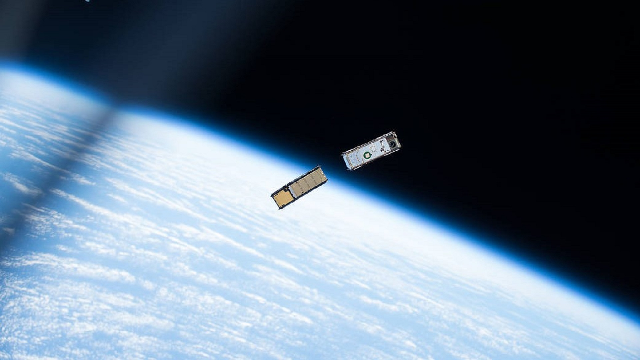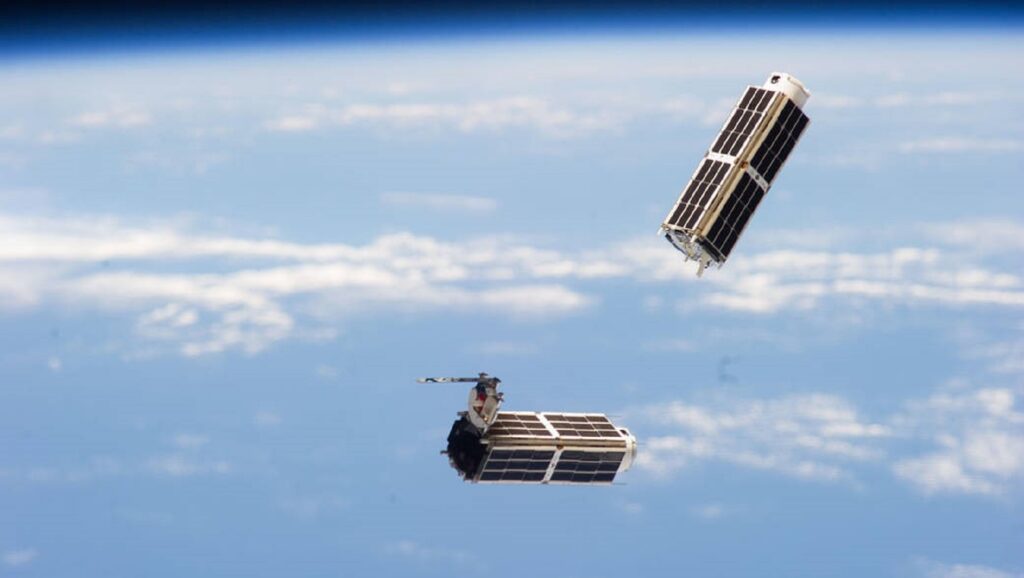Inspire students by showing them some incredible STEM technology being developed around them right now.
Use this article as an introduction to a discussion about future careers in STEM or even as a way to contextualise learning.

With the announcement of Australian joining NASA’s Artemis program to the Moon and Mars, there’s $150 million on the table for Aussie space innovations that will help get us to space. That money will be spent here, and not just given to NASA, as some people seem to think.
Some of the cutting-edge Australian space innovations that might play a major role were revealed in Adelaide at the 2019 Australian Space Research Conference. It’s a plethora of ideas, research, and developments that give a glimpse into what is happening now and into the future.
Here are 10 space innovations to get excited about:
1. CSIRO Mars mission
A new proposal suggests sending a CubeSat (a tiny satellite measured in multiples of 10cm by 10cm) to Mars. It could use radar or infrared sensors to search for water, help future human missions by mapping topography or measure the levels of dust in the Martian atmosphere. While this is just a proposal, the CSIRO are making huge strides in operating CubeSat missions with the launch of infrared imaging satellite CSIROSat-1 to occur from the US in 2020.
This proposal follows suit from NASA’s Mars Cube One mission in 2018, the first CubeSat to reach another planet, in this case, Mars. The two sats paired as a communication relay to monitor the descent of another NASA mission to the Martian surface in real-time. They proved that small satellites can indeed achieve big things.

2. Tracking satellites from the outback
Australia is a perfect place to go hunting for meteorites. Our wide, flat arid landscape lends itself as a perfect landing zone for space rocks. Curtin University tends to agree and set up the Desert Fireball Network using off the shelf, modular components. These were then dropped off in the middle of the outback to watch for shooting stars. Once spotted, the autonomous sensors triangulate the signal in real-time and the predicted landing coordinates were transmitted to the team lying in wait back at base.
But then something weird happened. They saw a blob on their images that couldn’t be traced. Was it a UFO? Was it aliens? It turns out it was a Chinese GPS satellite that was on its way to space! Here’s where I think something magical happened. Professor Phil Bland realised if his network could spot satellites, it could help track them and provide early warnings to any that were at risk of colliding.
The number of satellites in Earth’s orbit will only continue to increase, so we’ll need more precise information to better predict their risk of running into each other. This new Australian-led network, called FireOPAL, is putting Australia on the map in the field of space situational awareness – so much so that aerospace giant Lockheed Martin got involved.
3. Antibacterial spray coatings
Human immune systems seem to become altered in space, putting space travellers at risk of infection. So, as a hopeful astronaut, I was thrilled by a new antimicrobial spray coating developed by Boeing Australia. The spray contains molecular ‘nanoworms’ whose chemical structure leads to a bunch of useful properties. The ‘legs’ of the worm bind to microbes and literally rip them apart.
The ‘nanoworms’ also become more active when they get warmed up, such as when a grubby human hand touches the surface. And if you happen to sneeze, the coating will instantly spread out any droplets on the surface, drying out any microbes that try to survive. Boeing has been able to kill up to 90% of bacteria in their tests.
4. Tyvak to build manufacturing facility
We’ve already got local companies such as Fleet and Myriota sending satellites to space, and folks like Gilmour Space Technologies developing rockets to give them a ride. But one part of the space mission chain that was sorely missing from Australia were the people and companies to build these satellites.
At ASRC 2019, California-based Tyvak Nanosatellite Systems announced they will build a small satellite manufacturing facility in Australia. This will lead to more jobs for budding Aussie satellite engineers and will also make it more accessible for Australians to get their space missions built. They’ll be able to focus on defining what data they want to collect rather than how they’ll have to build it.
5. A resource map for miners

It’s illegal to claim ownership of any land in outer space, so how do mining companies make sure their valuable resources aren’t pinched by competitors? Jonti Horner from Near Earth Object Resource Atlas, or NEORA, believes selective data access will help skirt around this issue. Their company is constructing a database on asteroids that may help the mining industry plan their space mining operations.
Mining companies are able to register their interest in a particular asteroid, effectively barring other companies from accessing data on that same object. While the registered asteroid hasn’t had its territory claimed in the traditional sense, competitors are deterred from mining it simply due to the increased risk of visiting a place they have very little information on.
6. Giving firefighters a helping hand
Bushfire evacuations are terrifying, but imagine finally deciding to flee to safety to find the route you were given was even more dangerous than staying put. Last year, 88 Californian lives were lost when fires smothered an evacuation route as families were trying to escape. Those lives may have been saved if real-time fire maps were available.
Christopher Tylor, Co-Founder of FUEGO, believes that by combining satellite, drone and aerial data, we could instantly update firefighters and residents on which areas were safe or up in flames. By using both infrared and optical sensors, FUEGO can see through smoke with a deployment cost up to a hundred times below the value of the lives and properties it can save. This space innovation is one of many applications that find their way back to Earth.
7. Beaming power to lunar rovers
Researchers at the University of NSW are looking to transmit power from the edge of a permanently shadowed Moon crater to a rover inside it! They’ve been testing ways to use lasers to transfer power to a solar panel.
This means a solar-powered lunar rover would be able to explore areas the sun never touches. And we think those places are full of ice, which could be mined for lunar astronauts to drink, turned to rocket fuel or sold on the deep space marketplace.
8. Solar sound waves
As someone who looks forward to a future where space weather is part of our regular news updates, I was surprised to learn that we’re about to lose some of our forecasting power when it comes to outbursts from the sun.
The STEREO satellites, which trail slightly ahead and behind the Earth to view different sides of the sun, are about to become out of alignment with the back side for the next decade. That means we’d lose our head start in any weird sun weather that was about to travel into Earth’s view. However, Alina Donea from Monash University is listening to the sun to reveal its secrets. She’s literally listening to solar sound waves that take several hours to travel between the front and back sides to create a map of the sun’s surface. If the sound waves hit an area of strong magnetism, such as a sun spot, they’ll lose energy and will show up on the solar sound map as a dark spot.
9. Asteroid prospecting
A lot of people talk about combining Australia’s mining expertise with spaceflight to carve out a unique profitable niche for our space industry. But as any mining company worth their salt knows, you have to know what minerals are there before you mine it. Which is tricky – when it comes to asteroids, the apparent cash cow of mining rare metals in space, we’ve only ever studied a handful in depth.
William Crowe of HEO Robotics thinks we can do better. His company aims to drive down the cost and time to study asteroids 10-fold by preparing a fleet of satellites that lie in wait for targets that venture close. Once spotted, a small satellite is dispatched to survey the asteroid. Once it’s gathered the information it needs, the survey satellite returns to its High Earth Orbit vantage point, ready to do it all again.
10. Lunar dust medicines

I’ve always assumed long duration space missions will just ship all the medicines they will need with them but according to University of Adelaide medical student, Vienna Tran, the harsh radiation in deep space may reduce their effectiveness.
One proposed solution could involve using lunar dust as the filler or binder in tablets containing pharmaceuticals synthesised off-Earth. By using resources on the lunar surface, future Moon settlements will save drastic amounts of money, especially as the current price to ship anything from Earth is around $1.2 million per kilogram, according to U.S-based lunar delivery company, Astrobotic.
Login or Sign up for FREE to bookmark this page for future use.





